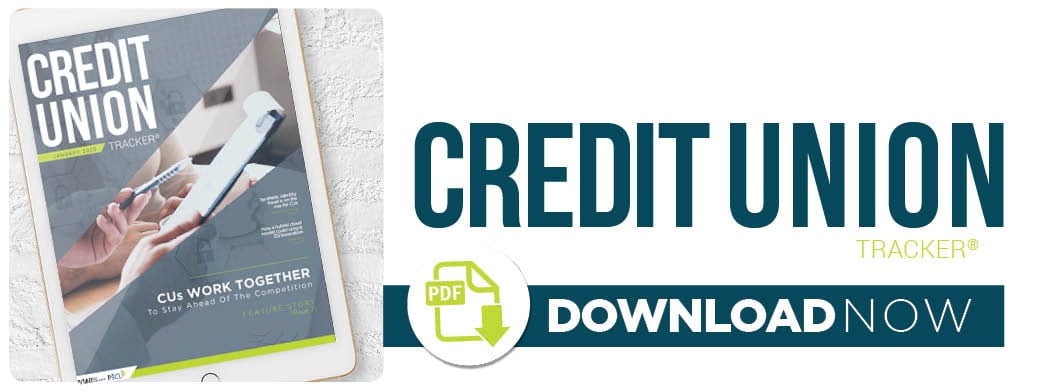CUs Work Together To Stay Ahead Of The Competition

With 79 percent of credit union members willing to switch to a financial institution with more convenient banking services, offering mobile apps is becoming increasingly vital for CUs. But many lack the resources to develop their own apps, making collaboration with other CUs crucial. In this month’s Credit Union Tracker, St. Louis-based Together Credit Union COO Tom Kraus explains how the institution works with its competitors to develop new products like mobile apps.
Credit unions (CUs) face fierce competition in the financial industry.
Their traditional banking rivals are now supplemented by young, agile FinTechs that advertise the most advanced technology and much greater efficiency than their legacy counterparts, meaning that CUs must lean into their strengths to get ahead.
Few are more familiar with this challenge than St. Louis, Missouri-based Together Credit Union, which operated under three separate names — American Eagle Credit Union, Anheuser Busch Employees’ Credit Union and Purina Credit Union — until late last year. Their consolidation helped solidify Together Credit Union’s position in the financial market, but its competitors have not backed off.
“It’s a very busy space,” said Together’s chief operating officer, Tom Kraus, in an interview with PYMNTS. “St. Louis, specifically, is very overbanked.”
The challenges of operating in an increasingly crowded financial field can lead many CUs to seek mergers or shutter entirely, he explained, but cooperation with other CUs and advanced technology have given Together the edge it needed to succeed.
There’s No “I” in CU
One primary advantage CUs have over their bank and FinTech rivals is their unique cooperation with others in their field. CUs often see each other as teammates rather than rivals, Kraus noted, and that fosters a sense of solidarity in the financial marketplace.
“[We] bounce ideas off of other credit unions and folks that work in this space on a regular basis,” he said. “The one thing that’s really powerful about the credit union industry is that we share a lot of best practices with each other. We can learn from our partners that are in this space, and partner up to not only share information, but also share development of new products.”
This cooperation extends to the political sphere, too. The SAFE Banking Act, a bill concerning the disposition of revenue in the legal marijuana industry, is currently making its way through Congress and is expected to impact the entire banking industry, according to Kraus.
“We work very closely with the Heartland Credit Union Association, [a CU trade association that] handles Kansas and Missouri, to make sure that our point of view is represented not just with the SAFE Banking Act, but other legislation that is being considered out of Washington, D.C.,” he explained.
These alliances only comprise half the arsenal Together leverages to remain competitive, however. The other is the latest technology.
Getting Technical
Technology is often perceived as the realm of FinTechs and large banks that can afford to leverage it, with CUs often left behind. This could not be further from the truth, Kraus noted.
“One of the things that I’ve heard, just in my time, is that credit unions are not technologically advanced as much as banks,” he said. “I really don’t think that’s the case.”
Together deploys an extensive array of banking technology to supply its members with a range of services. Its MobileAccess+ mobile app provides self-service amenities beyond standard transfers and withdrawals, for example. Members can deposit checks on their mobile devices and even apply for pre-approved home or vehicle loans.
The CU has also rolled out advanced interactive teller machines (ITMs), improved versions of traditional ATMs that allow members to connect with live tellers over webcams. This allows customers to access banking services like account openings that would normally require a visit to a physical branch.
On top of all this new technology is a core banking system that Together is preparing to deploy in the coming months that will fuel even more advanced innovations. Technology like this is especially important for attracting new members, particularly younger generations like millennials and Generation Z. They might be attracted to banks’ or FinTechs’ flashier features, Kraus noted, but it is critical that CUs like Together attract such members and obtain their lifelong loyalty.
“This [is an] emerging market with the kids that are starting their savings account, [getting] their first job and getting that first checking account,” he said. “[We’re] teaching them how to do digital deposit, use an app to transfer money from their checking accounts to their savings account or pay a bill.”
Cooperative efforts and technology initiatives are worthless if CUs cannot monitor their day-to-day business efficacy, though. Together’s metrics for that success rely on a number of means.
Measuring Success
CUs can measure various metrics to determine their standing in the financial industry. Market share, asset size and third-party surveys are some of the more common approaches.
Together leverages several tools to determine its competitive ventures’ effectiveness, Kraus said, including in-house surveys asking members if they would recommend Together, internal databases that track member transactions, and segmentation data that follows subsets of customers and their interactions with the CU. The ultimate measure of success is its memberships, however. Kraus explained that members who are happy with Together’s services tend to remain members and avail themselves of more of the services the CU provides.
“We look at products per member, and the more engaged [they are] with more products, the more likely they are to stay with us for the long term,” he said.
Positive feedback loops like these are key to continued success for CUs like Together and can even encourage them to institute new features and services to keep their members loyal. These prosperous CUs, in turn, can help each other improve the industry as a whole.

